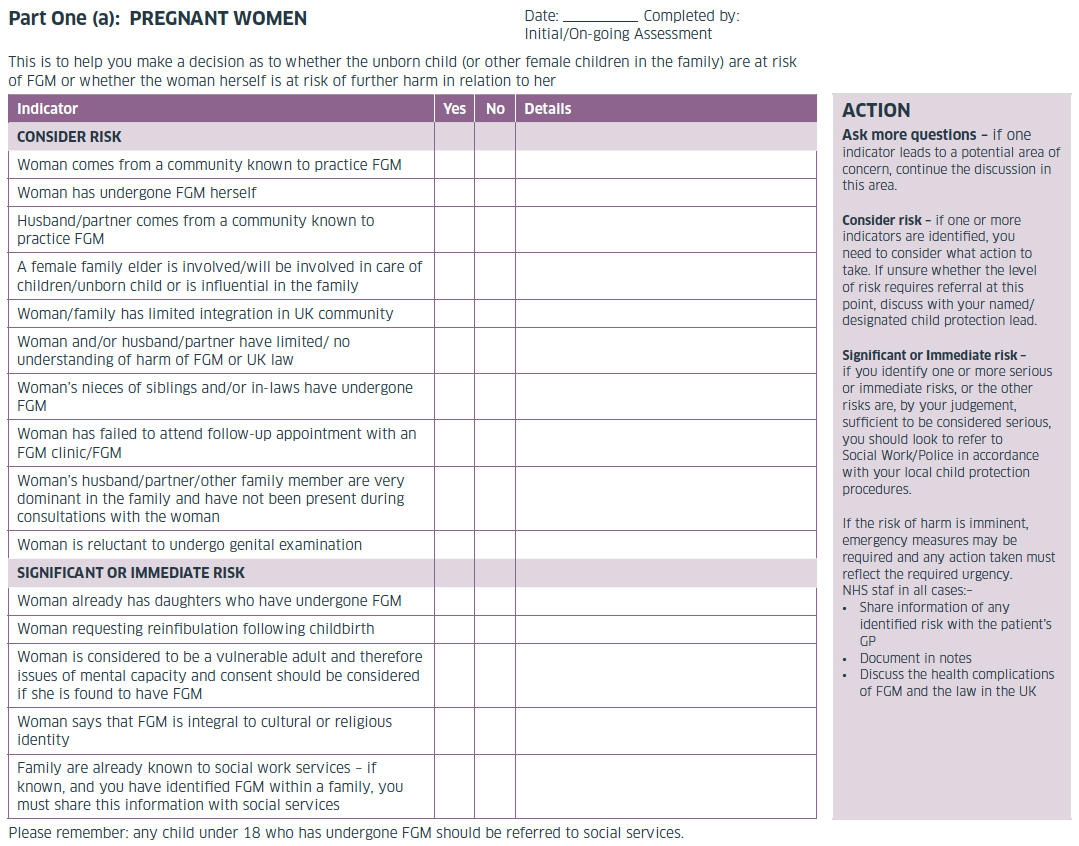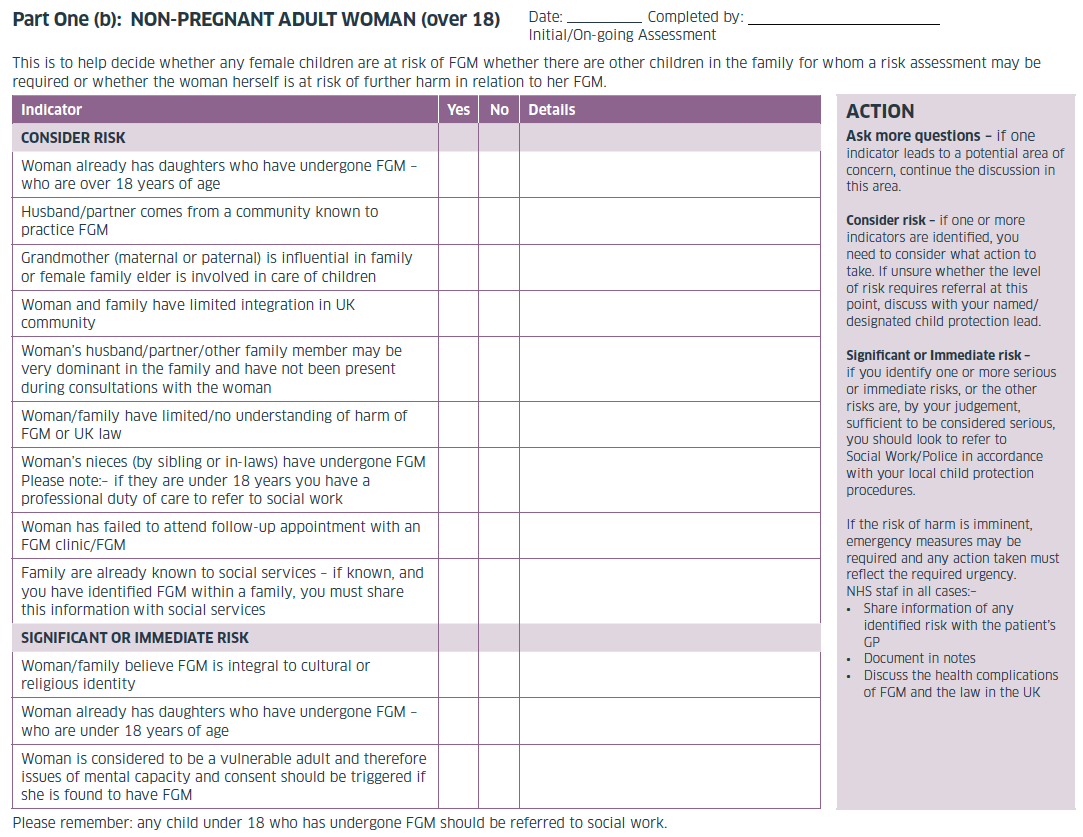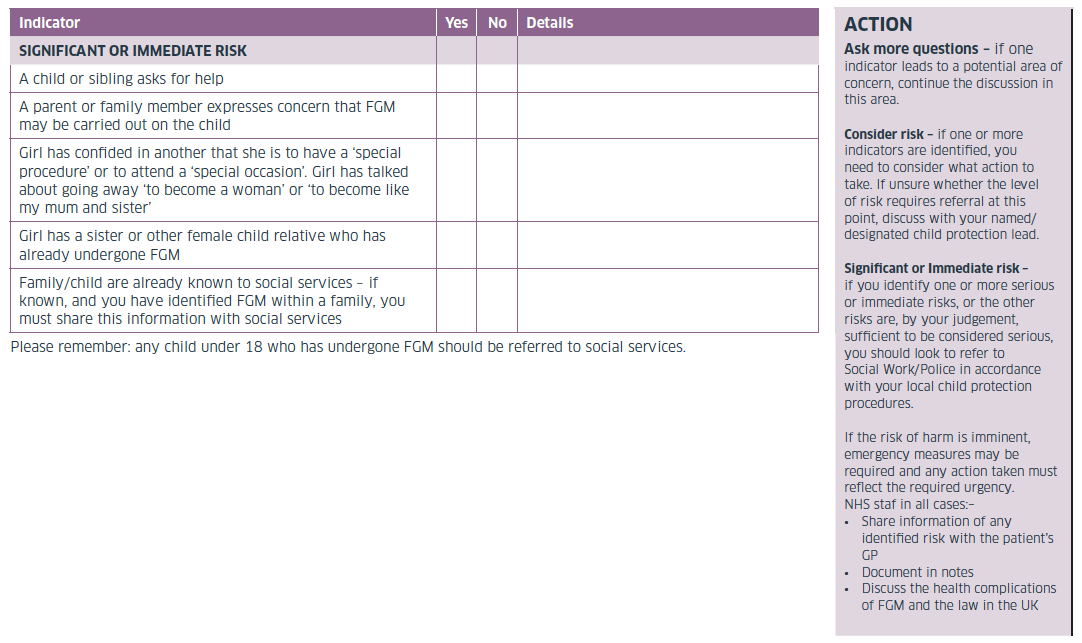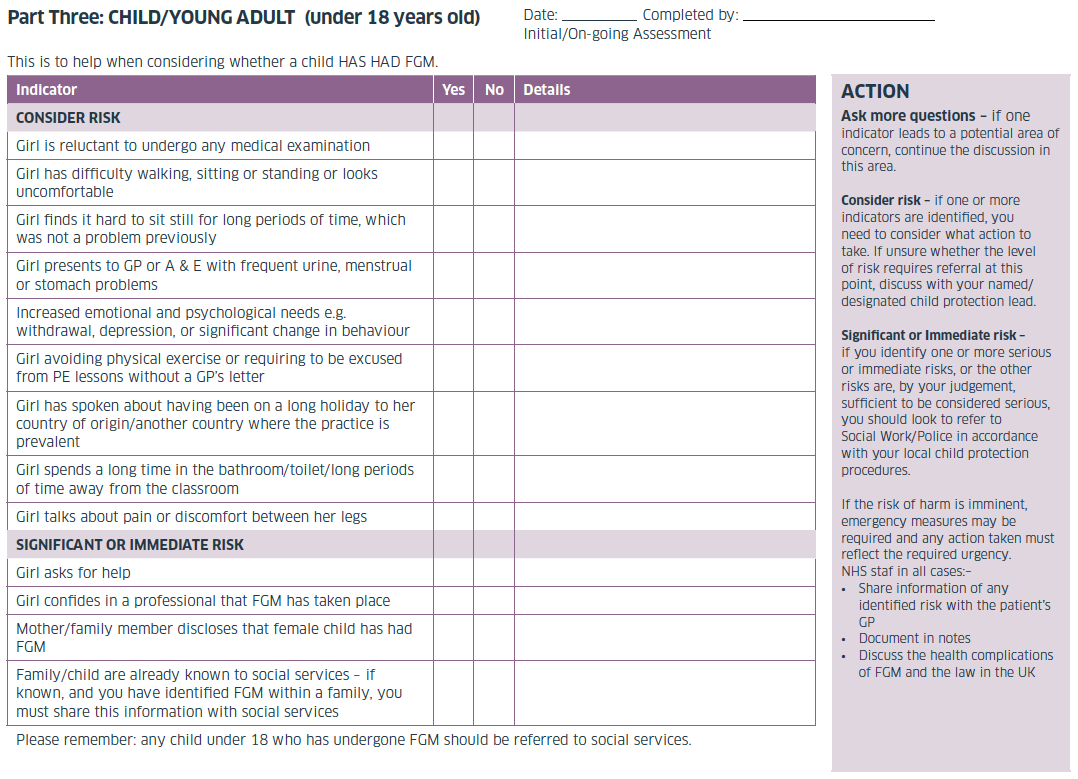Responding to female genital mutilation: multi-agency guidance
A framework for agencies and practitioners to develop and agree processes that promote the safety and wellbeing of women and girls.
Appendix 4: FGM risk assessment guidance
Introduction
The aim is to help make an initial assessment of risk, and then support the ongoing assessment of women and children who come from FGM affected communities (using parts 1 to 3).
Introductory questions:
(1) Do you or your partner come from a community where cutting or circumcision is practised? (See appendix 3 for map. Please remember you might need to consider that this relates to their parent’s’ country of origin).
(2) Have you been cut? It may be appropriate to use other terms or phrases.
If you answer Yes to questions (1) or (2) please complete one of the risk templates.
Part One: For an adult woman (18 years or over)
(a) Pregnant Woman: ask the introductory questions.
If the answer is Yes to either question, use part 1(a) to support your discussions.
(b) Non-Pregnant Woman where you suspect FGM.
For example, if a woman presents with physical symptoms or emotional behaviour that triggers a concern (such as frequent urinary tract infections, severe menstrual pain, infertility, symptoms of PTSD such as depression, anxiety, flashbacks or reluctance to have genital examination, see part 5); or if FGM is discovered through the standard giving of healthcare (for example when placing a urinary catheter, carrying out a smear test and so on), ask the introductory questions.
If the answer is Yes to either question, use part 1(b) to support your discussions.
Part Two: For a girl (under 18 years)
Ask the introductory questions (see above) to either the child directly or the parent or legal guardian depending upon the situation.
If the answer to either question is yes or you suspect that the child might be at risk of FGM, use part 2 to support your discussions.
Part Three: For a girl (under 18 years)
Ask the introductory questions (see above) to either the child directly or the parent or legal guardian depending upon the situation.
If the answer to either question is yes or you suspect that the child has had FGM (see part 5), use part 3 to support your discussions.
In all circumstances:
- The woman and family must be informed of the law in the UK and the health consequences of practising FGM.
- Ensure all discussions are approached with due sensitivity and are non-judgemental.
- Any action must meet all statutory and professionals responsibilities for child protection, and be in line with local processes and arrangements.
- Using this guidance does not replace the need for professional judgement in about the circumstances presented.
Guidance
The framework is designed to support practitioners to identify and consider risks for female genital mutilation, and to support the discussion with her and family members.
It should be used to help assess whether a woman is either at risk of harm of FGM or has had FGM, and whether she has children who are potentially at risk of FGM, or if there are other children in the family/close friends who might be at risk.
When asking questions based on this guide, if any answer gives you cause for concern, you should continue the discussion, and consider asking other related questions to explore this concern. Please remember that you must record either the assessment or the information obtained in the woman’s record. The templates also require that you record when, by whom and at what point in the care pathway this has been completed.
Having used the guide, you will need to decide:
- Do you need to make a referral through your local child protection processes, and is that an urgent or standard referral?
- Do you need to seek help from your local child protection lead or other professional support before making a decision?
- If you do not believe the risk has altered since your last contact with the family, or if the risk is not at the point where you need to refer to an external body, then you must ensure you record and share information about your decision accordingly.
You should refer a girl or young women under 18 who is discovered to have had FGM through your local child protection procedures during normal working hours if there is no imminent or urgent risk identified.
You should make an Urgent referral, out of normal hours if necessary, if a girl or young woman shows signs of very recently having undergone FGM. This may allow the police to collect physical evidence.
You should also make an Urgent referral if you believe that there are plans to travel abroad which mean there is a risk that a girl is imminently likely to undergo FGM if allowed to leave your care.
In urgent cases, social work and the police will consider what action to take.





Contact
There is a problem
Thanks for your feedback